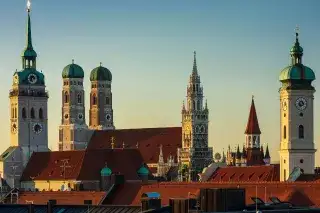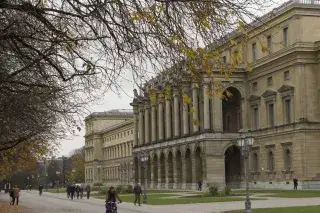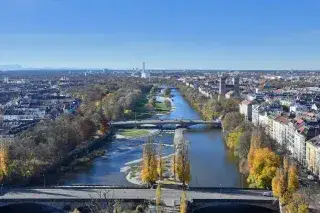Munich landmark at the end of Ludwigstraße
Siegestor: Triumphal Arch and Peace Memorial in Munich
Paris has the Arc de Triomphe, Munich has the Siegestor: The "Victory gate" at the end of the famous Ludwigstrasse boulevard is one of Munich's most famous sights and has appeared in numerous movies. At nighttime, it is illuminated.
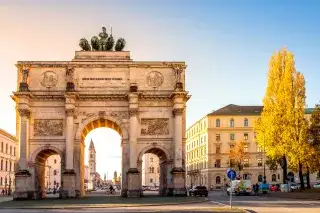
More actions
The Siegestor at a glance
- The Siegestor ("Victory Gate") was built between 1843 and 1850 according to plans by Friedrich von Gärtner.
- It forms the border between two of Munich's most famous streets: Ludwigstrasse and Leopoldstrasse. The Siegestor is located directly next to Ludwig Maximilian University.
- The stone structure is adorned with a quadriga: a figure of Bavaria, the patron saint of the Free State, on a carriage drawn by lions.
- After the end of the Second World War, the gate, which was heavily destroyed at the time, was turned into a memorial and the following inscription was added during reconstruction: "Dedicated to victory, destroyed by war, admonishing peace" ("Dem Sieg geweiht, vom Krieg zerstört, zum Frieden mahnend")
- The Siegestor is not only used for art projects such as light installations, but is also used as a popular backdrop for films.
Location: Where two main boulevards meet
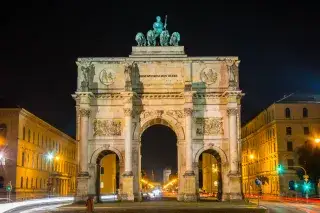
The triumphal arch, commissioned by King Ludwig I to the architect Friedrich von Gärtner around 1840, was to be modeled on the Arch of Constantine in Rome.
The stone Siegestor not only marks the transition from Ludwigstrasse to Leopoldstrasse, but also forms the northern end of a visual axis that begins with the Feldherrenhalle on Odeonsplatz. North of the Siegestor is Leopoldstrasse, the main promenade of the trendy Schwabing district.
- Learn more about Odeonsplatz and the Feldherrnhalle here
The Quadriga: Bavaria with lions
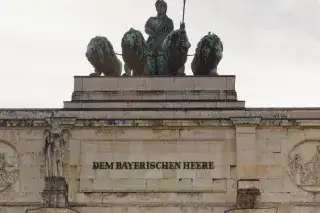
On the Siegestor you can see a bronze sculpture of Bavaria with four lions looking northwards. The Bavaria was sculpted by Friedrich Brugger, the lions by Johann von Halbig.
In the 19th century, when the Siegestor was built, there were still mostly fields and meadows lying northwards. The Bavaria is thus looking towards the Bavarian army, in keeping with the dedication motto "Dem bayerischen Heere" ("To the Bavarian army").
The quadriga was also badly damaged during the Second World War. Elmar Dietz took care of the restoration so that a restored version could be placed on the Siegestor in 1972. The quadriga has a weight of about 20 tons.
More about the inscription: Admonishing to peace
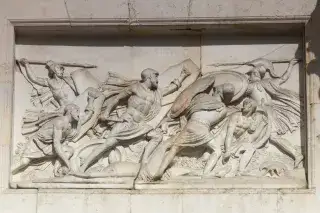
On the north side of the gate, the dedication slogan commemorates the victorious end of the wars of liberation of 1815. The south side is adorned since the end of the Second World War with the inscription "Dedicated to victory, destroyed by war, admonishing peace".
Several reliefs can be admired on the walls, with war scenes, such as fights between horsemen and soldiers, on the lower rows.
The higher medallions, on the other hand, show typical images from the Bavarian districts. The inscription on the south side of the gate is meant to remind us that war brings death and destruction. The Siegestor is thus also a memorial.
